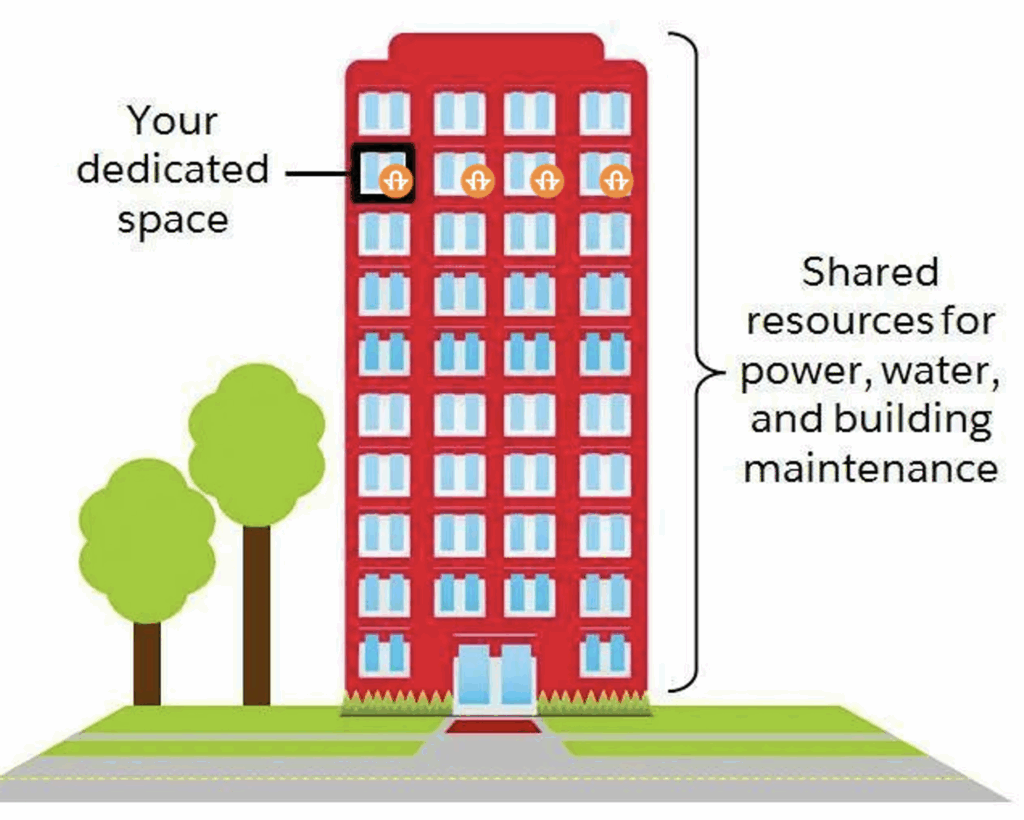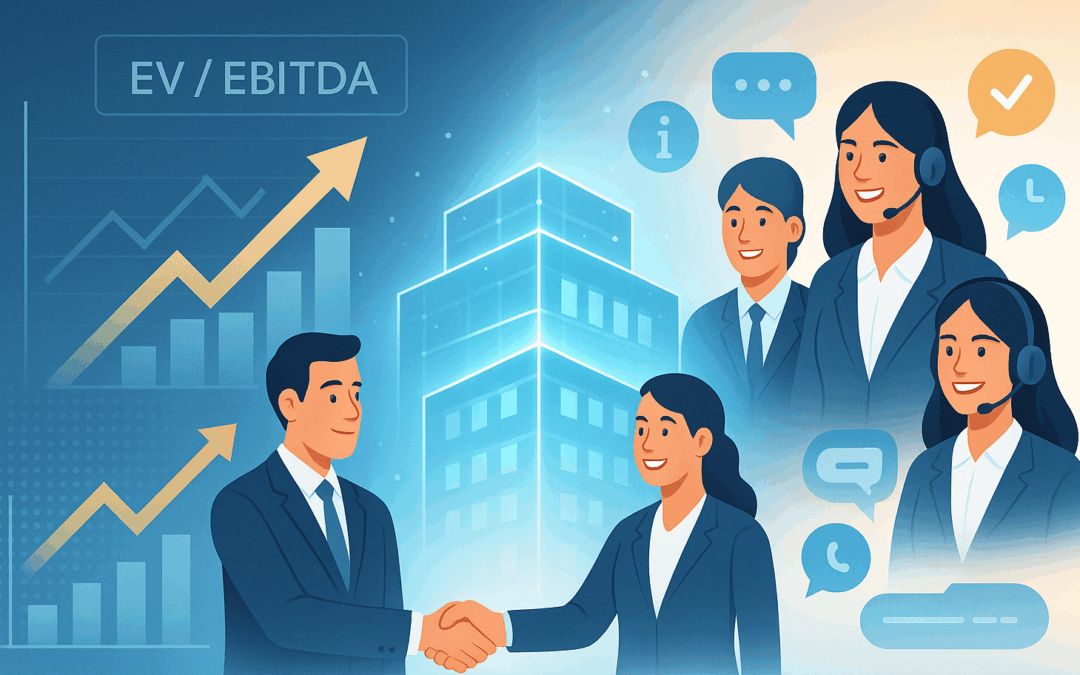In search of enterprise value, there are countless ways to bring a new software product to market. Modern technology stacks, cloud infrastructure, and artificial intelligence (AI) have lowered the barriers to entry for founders and product teams. The result is a landscape where we can rapidly build, scale, and deploy enterprise-ready applications with far fewer resources than a decade ago.
One of the most powerful enablers of this trend is Salesforce. As a leading application platform as a service (aPaaS), Salesforce provides developers with the ability to extend base functionality and deliver robust, scalable applications. For founders, this sounds like a dream: a secure, enterprise-ready platform, a global marketplace (AppExchange), and the potential to sign recurring revenue deals with large customers.
But this raises an important strategic question: can you build enduring SaaS enterprise value on Salesforce?
The answer is: sort of.
Defining Enterprise Value in SaaS
Before we dive deeper, let’s ground ourselves in how enterprise value (EV) is typically assessed in the SaaS world.
For software companies, EV is often calculated as a multiple of recurring revenue (ARR or MRR). Investors weigh several key factors:
- Recurring revenue model – predictable, long-term contracts carry higher multiples.
- Customer retention and churn – low churn signals sticky products and strong value delivery.
- Gross margins – software margins are typically 70–90%, but infrastructure costs can impact this.
- Scalability of the platform – the ability to serve thousands of users without proportionally scaling costs.
- Defensibility – intellectual property, switching costs, and network effects that prevent easy replication.
On the surface, Salesforce partners can tick many of these boxes. They can quickly launch recurring revenue models, onboard large customers, and scale globally. But when we look at defensibility, the core of long-term enterprise value, the picture becomes more complicated.
The Speed of Replication
One of the most striking aspects of building on Salesforce is how quickly functionality can be replicated. A single developer, working 6–12 months, can often rebuild features that a Salesforce partner has spent years developing.
This is not a hypothetical. At AdmiralBridge, we’ve experienced this firsthand:
- A customer asked us to add a signature component for store managers to sign off assessment results. Using ChatGPT, we generated an entire Salesforce Lightning Web Component in under an hour, refined it slightly, and shipped it in our next package release.
- For another feature, we wanted to surface industry-recognized news feeds and podcasts directly within our platform. Again, with ChatGPT, we built a base component in minutes, cleaned it up, and repeated the process across multiple sources. Traditionally, this could have consumed a developer’s month, outside of Salesforce it might have taken longer.
With AI, the speed of replication accelerates even further. What used to be a multi-year moat is now a matter of weeks or months.
Data Portability and Customer Switching
Another challenge for Salesforce-native applications is customer transition. Salesforce provides every tenant with the ability to “Export All Data” at any time. The data is provided in a standard format that can easily be imported into another Salesforce application.
In practical terms, this means a competitor can onboard a new customer without painful migrations, minimizing switching costs. While this is fantastic for customers, it reduces the lock-in and defensibility that traditionally drives higher enterprise value multiples.
A Real Estate Analogy
To understand why this matters, it helps to visualize the difference between building on Salesforce versus a traditional cloud provider like AWS or Azure.
On Salesforce: You lease a floor in a high-rise condo tower. The locks, doors, windows, and exterior are all maintained by Salesforce. You customize and furnish your floor for your tenants (customers).
On AWS or Azure: You buy an open field of digital real estate. You must build the roads, the utilities, the security systems, and the house itself. You own it all, but you’re responsible for maintaining it.

This means you spend far less time worrying about security, compliance, and infrastructure. You can focus entirely on customer experience. The trade-off is that you are subject to the same rules and limitations as everyone else in the tower. Your neighbors can often copy what you’ve done without the heavy lifting.
What This Means for Enterprise Value
So, what does all this imply for Salesforce-based companies?
- Technical differentiation is fragile. Features can be cloned quickly, especially with AI.
- Customer service and innovation cadence become critical. If your technology can be replicated, your enterprise value will be judged more on how quickly you innovate and how well you serve your customers.
- Data portability reduces lock-in. Customers have freedom of choice, so building long-term trust and delivering continuous value is the only way to retain them.
At AdmiralBridge, we deliberately chose to build on Salesforce. Not because it guarantees us the highest enterprise valuation, but because it allows us to deliver enterprise-grade applications to customers without burdening them with the overhead of infrastructure management. For us, it’s about empowering customers, not gaming valuation metrics.
A key point to remember is that if it’s easy for you to build something, it’s just as easy for someone else. Real enterprise value comes from tackling the hard problems, those that cannot be quickly replicated. In today’s market, with AI and platforms like Salesforce lowering the barrier to development, writing code alone may no longer qualify.
A Shift in the Investor and Customer Mindset
For investors, evaluating a Salesforce-based company requires new criteria. Instead of asking, “How defensible is your tech moat?” the better questions are:
- How fast can you innovate?
- How strong are your customer relationships?
- What is your retention rate and customer satisfaction level?
From an investment perspective, if a capability is easy for one company to build, it’s just as easy for a competitor. Sustainable enterprise value comes from defensible advantages, customer relationships, brand trust, and innovation velocity, not just lines of code. In today’s environment, where AI and platforms like Salesforce compress development timelines, the true differentiators are the hard-to-replicate elements of the business.
For customers, the takeaway is equally important. Don’t be dazzled by technical wizardry alone. With Salesforce and AI, features are replicable. What you should expect and demand is high-quality, personalized service, and a partner who continually delivers value.
Final Thoughts
Salesforce is one of the greatest enablers for SaaS founders. It lowers barriers, accelerates time to market, and gives even small companies access to enterprise-grade capabilities. But building enterprise value on Salesforce looks different than in traditional SaaS. Defensibility shifts from the codebase to the customer experience.
In this environment, the winners won’t be those who build the most features. They’ll be the companies that move the fastest, serve their customers the best, and adapt relentlessly in a world where replication is only a few prompts away. Customer churn may be the biggest indicator of the future enterprise value of a customer, if churn is on the rise that is a major red flag that customer have found an alternative.

